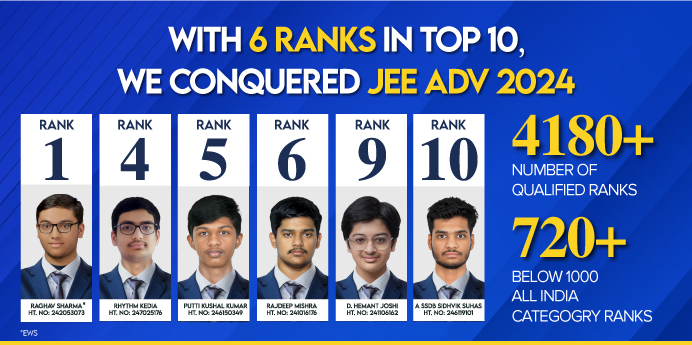










Courses

By rohit.pandey1
|
Updated on 12 Sep 2025, 16:34 IST
Ruling the Countryside MCQs—Here is a compilation of free, chapter-wise practice for NCERT Class 8 History (Our Pasts–III) Chapter 3. The sets follow the latest CBSE Board competency-based pattern and include answers, brief explanations, and a complete answer key so you can revise quickly.
This chapter’s Class 8 History Chapter 3 MCQs cover all high-yield areas: the Permanent Settlement (1793, Lord Cornwallis) with zamindars, fixed revenue and auction of estates; Ryotwari under Thomas Munro with direct settlement to ryots; Mahalwari (1822, Holt Mackenzie) assessed on the mahal (village/estate); and Indigo cultivation—the nij and ryoti systems, planter advances (taccavi/avans), low prices, and peasant indebtedness. You’ll also practice key events from the Indigo Revolt/Blue Rebellion (1859–60), the Indigo Commission (1860), and contextual references like Dinabandhu Mitra’s Nil Darpan, along with the wider impact of revenue demand on agriculture and rural society.
Start with the Ruling the Countryside online quiz, then save the MCQ PDF download for offline practice. This focused question bank of CBSE Class 8 History MCQs Ch 3 brings together objective questions, important questions, and a clean worksheet with answer key, giving you everything needed to master NCERT Class 8 History—Ruling the Countryside.
Permanent Settlement (1793) was introduced by:
(a) Lord Wellesley
(b) Lord Cornwallis
(c) Warren Hastings
(d) Lord Dalhousie
Answer: (b)
Under Permanent Settlement, revenue was fixed:
(a) Annually
(b) For ten years
(c) Permanently
(d) Every harvest
Answer: (c)
In Permanent Settlement, the key intermediaries were:
(a) Ryots
(b) Zamindars
(c) Jagirdars
(d) Talukdars
Answer: (b)
If zamindars failed to pay revenue on time, their estates could be:
(a) Granted remission
(b) Given to ryots
(c) Auctioned
(d) Converted to crown land
Answer: (c)
The Ryotwari system made revenue settlements directly with the:
(a) Zamindar
(b) Mahal
(c) Ryot (cultivator)
(d) Banker
Answer: (c)

Ryotwari is most closely associated with administrator:
(a) Holt Mackenzie
(b) Thomas Munro
(c) Charles Metcalfe
(d) Mountstuart Elphinstone
Answer: (b)
The Mahalwari settlement assessed revenue at the level of the:
(a) Individual field
(b) District
(c) Mahal (village/estate)
(d) Province
Answer: (c)

JEE

NEET

Foundation JEE

Foundation NEET

CBSE
Mahalwari assessment was systematised under:
(a) Holt Mackenzie
(b) Lord Cornwallis
(c) Robert Clive
(d) Lord Canning
Answer: (a)
Indigo cultivation by planters on their own land was called:
(a) Ryoti
(b) Nij
(c) Taccavi
(d) Ijara
Answer: (b)
When peasants grew indigo on their fields under advances/contracts, it was the:
(a) Nij system
(b) Mahalwari system
(c) Ryoti system
(d) Ryotwari system
Answer: (c)
Money advanced to peasants for indigo cultivation was commonly called:
(a) Dastak
(b) Avans/Taccavi
(c) Zar-i-zamin
(d) Diwani
Answer: (b)

Planters preferred alluvial soils of Bengal/Bihar for indigo mainly because:
(a) They needed less labour
(b) Indigo grows well in such soils
(c) Taxes were lower there
(d) Rainfall was irrelevant
Answer: (b)
A major problem peasants faced with indigo was that it:
(a) Restored soil fertility
(b) Needed no irrigation
(c) Exhausted soil and reduced food-crop acreage
(d) Was harvested round the year
Answer: (c)
The Indigo Revolt (Blue Rebellion) took place in:
(a) 1848–49
(b) 1859–60
(c) 1869–70
(d) 1885–86
Answer: (b)
Following the revolt, the colonial state set up the:
(a) Indigo Commission (1860)
(b) Bengal Board of Revenue (1865)
(c) Deccan Commission (1875)
(d) Famine Commission (1880)
Answer: (a)
In many areas after 1860, peasants increasingly shifted from indigo to:
(a) Cotton
(b) Jute
(c) Tea
(d) Tobacco
Answer: (b)
The book/drama that highlighted indigo peasant distress was:
(a) Anandamath
(b) Nil Darpan
(c) Hind Swaraj
(d) Gitanjali
Answer: (b)
A key risk of the fixed-revenue demand in Permanent Settlement was:
(a) Incentive for zamindars to invest in improvement
(b) Government bore all monsoon risk
(c) Zamindars faced rigid dues even in bad harvests
(d) Revenue automatically fell in drought years
Answer: (c)
One intended advantage of Mahalwari over Permanent Settlement was:
(a) No surveys needed
(b) Flexible revision of revenue assessments
(c) Abolition of all intermediaries
(d) Payment in kind only
Answer: (b)
A common reason for peasant indebtedness under indigo contracts was:
(a) High procurement prices
(b) Advances tied to compulsory indigo acreage
(c) Free choice of crop
(d) State subsidies for food grains
Answer: (b)
Permanent Settlement (1793) was introduced by:
(a) Lord Wellesley
(b) Lord Cornwallis
(c) Warren Hastings
(d) Lord Dalhousie
Answer: (b)
Under Permanent Settlement, revenue was fixed:
(a) Annually
(b) For ten years
(c) Permanently
(d) Every harvest
Answer: (c)
In Permanent Settlement, the key intermediaries were:
(a) Ryots
(b) Zamindars
(c) Jagirdars
(d) Talukdars
Answer: (b)
If zamindars failed to pay revenue on time, their estates could be:
(a) Granted remission
(b) Given to ryots
(c) Auctioned
(d) Converted to crown land
Answer: (c)
The Ryotwari system made revenue settlements directly with the:
(a) Zamindar
(b) Mahal
(c) Ryot (cultivator)
(d) Banker
Answer: (c)
Ryotwari is most closely associated with administrator:
(a) Holt Mackenzie
(b) Thomas Munro
(c) Charles Metcalfe
(d) Mountstuart Elphinstone
Answer: (b)
The Mahalwari settlement assessed revenue at the level of the:
(a) Individual field
(b) District
(c) Mahal (village/estate)
(d) Province
Answer: (c)
Mahalwari assessment was systematised under:
(a) Holt Mackenzie
(b) Lord Cornwallis
(c) Robert Clive
(d) Lord Canning
Answer: (a)
Indigo cultivation by planters on their own land was called:
(a) Ryoti
(b) Nij
(c) Taccavi
(d) Ijara
Answer: (b)
When peasants grew indigo on their fields under advances/contracts, it was the:
(a) Nij system
(b) Mahalwari system
(c) Ryoti system
(d) Ryotwari system
Answer: (c)
Money advanced to peasants for indigo cultivation was commonly called:
(a) Dastak
(b) Avans/Taccavi
(c) Zar-i-zamin
(d) Diwani
Answer: (b)
Planters preferred alluvial soils of Bengal/Bihar for indigo mainly because:
(a) They needed less labour
(b) Indigo grows well in such soils
(c) Taxes were lower there
(d) Rainfall was irrelevant
Answer: (b)
A major problem peasants faced with indigo was that it:
(a) Restored soil fertility
(b) Needed no irrigation
(c) Exhausted soil and reduced food-crop acreage
(d) Was harvested round the year
Answer: (c)
The Indigo Revolt (Blue Rebellion) took place in:
(a) 1848–49
(b) 1859–60
(c) 1869–70
(d) 1885–86
Answer: (b)
Following the revolt, the colonial state set up the:
(a) Indigo Commission (1860)
(b) Bengal Board of Revenue (1865)
(c) Deccan Commission (1875)
(d) Famine Commission (1880)
Answer: (a)
In many areas after 1860, peasants increasingly shifted from indigo to:
(a) Cotton
(b) Jute
(c) Tea
(d) Tobacco
Answer: (b)
The book/drama that highlighted indigo peasant distress was:
(a) Anandamath
(b) Nil Darpan
(c) Hind Swaraj
(d) Gitanjali
Answer: (b)
A key risk of the fixed-revenue demand in Permanent Settlement was:
(a) Incentive for zamindars to invest in improvement
(b) Government bore all monsoon risk
(c) Zamindars faced rigid dues even in bad harvests
(d) Revenue automatically fell in drought years
Answer: (c)
One intended advantage of Mahalwari over Permanent Settlement was:
(a) No surveys needed
(b) Flexible revision of revenue assessments
(c) Abolition of all intermediaries
(d) Payment in kind only
Answer: (b)
A common reason for peasant indebtedness under indigo contracts was:
(a) High procurement prices
(b) Advances tied to compulsory indigo acreage
(c) Free choice of crop
(d) State subsidies for food grains
Answer: (b)
No courses found
The Diwani is the right to collect land revenue; it was granted to the East India Company in 1765.
A land-revenue system that fixed revenue permanently with zamindars; introduced by Lord Cornwallis in 1793.
Permanent: fixed demand via zamindars; Ryotwari: direct settlement with the ryot (cultivator); Mahalwari: assessment on the mahal (village/estate), often revisable.
Thomas Munro in Madras/Bombay regions; revenue paid directly by ryots to the state.
Proposed by Holt Mackenzie (1822); revenue assessed collectively on the mahal and collected through village headmen.
Nij: planters grew indigo on their own land;
Ryoti: peasants grew indigo on their fields under advances/contracts.
Because peasants were forced to grow indigo at low prices under coercive contracts; the revolt occurred in 1859–60 in Bengal.